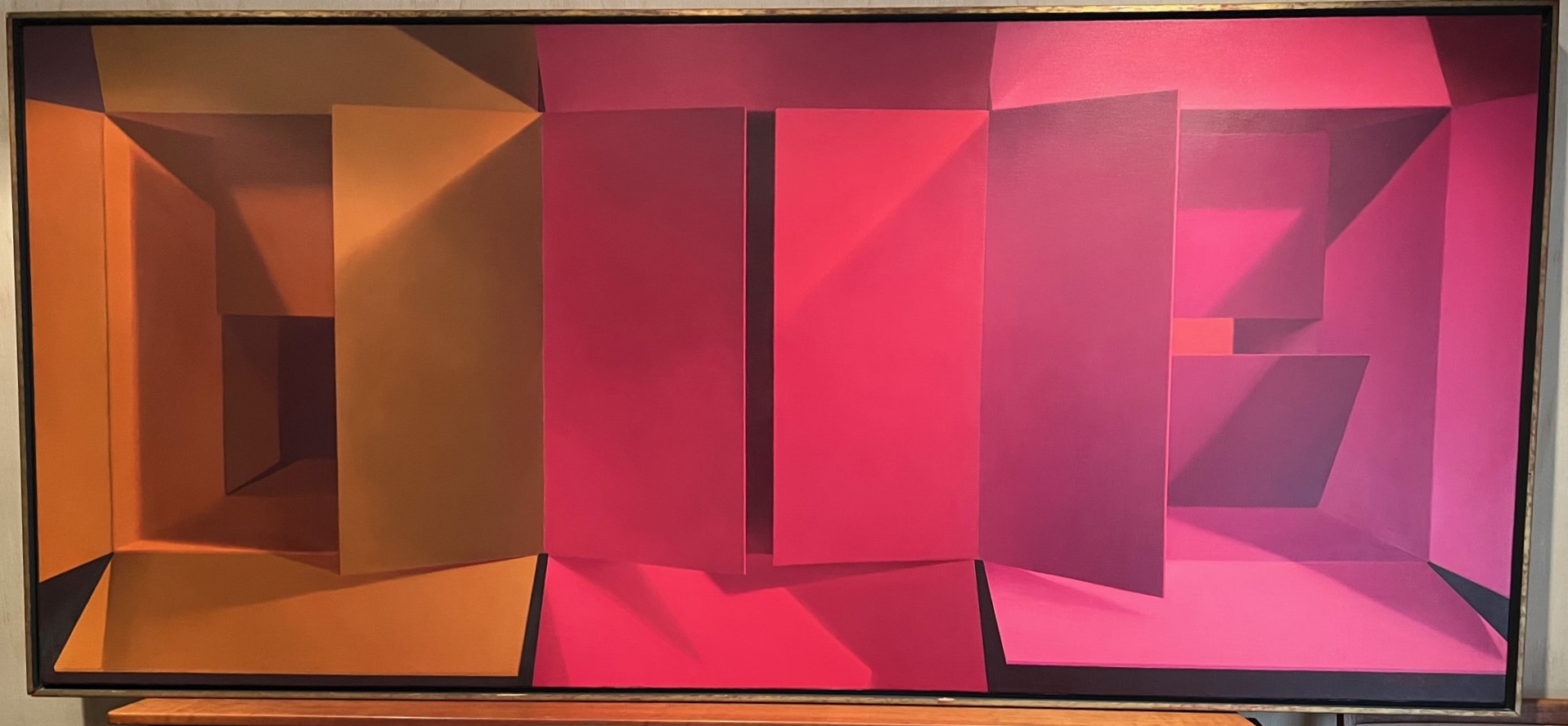Anthony Schepis
(Cleveland, Ohio, 1927 - )
Closures III
c. 1980
oil on canvas
43 x 94 in. (109.2 x 238.8 cm)
Collection of the Akron Art Museum
Gift of Mr. and Mrs. Martin Bliman through the support of the Arden Riddle Foundation
2023.6
More Information
Early in his career, around the time that he completed his MFA degree from Kent State University, Schepis created a series of paintings depicting cardboard boxes seen from a topdown point of view. Examples featuring this subject matter found online range from 1978–1981, and, in an essay on the artist, Elizabeth McClelland generally notes that he created works of this type “earlier in his career.” Schepis later engaged with a much wider variety of objects, depicting them in suggestive still-life arrangements so as to arouse a sense of enigmatic meaning, and his period of working with cardboard boxes stands as a particularly focused and extended precursor to that manner of working. In Schepis’s cardboard box paintings, each box is usually presented as a distinct unit, separate from its neighbors. This quality arises both from Schepis picturing the flaps of the boxes so that overlap between adjacent units is minimal, and from the bright and different colors that he gives to each box. Of course, cardboard boxes come in many colors, but the artist’s particularly vibrant palette and the colored interiors of the boxes (uncommon in commercial packaging) suggest an imaginative approach. Though this is not the case in the untitled painting presented here, Schepis sometimes also went so far as to paint each box on its own separately stretched canvas, joining multiple canvases together to create a finished work. Whether on one canvas or many, the boxes in a given work are typically all of the same proportions, yielding neat grids that facilitate comparison between the boxes. These features create conditions that highlight Schepis’s playful experimentation with the positions of the flaps in his boxes. As a typical cardboard box has eight flaps in all, and each flap can be positioned at a range of angles, the artist had a great many possibilities at his disposal. (Indeed, his boxes seem to float in dark and undifferentiated space, so they can be coherently arranged without concern for gravity or a supporting surface.) Differing positionings create new arrangements of light and hadow, shifting presentations of interior spaces that are either revealed or concealed, and a varied relationships with adjacent boxes. For example, in the untitled painting presented here, the symmetrical position of the nearly-closed flaps of the central red box may prompt a sense of a continuous shape that extends to the adjacent flaps of the boxes to the left and right, which are also symmetrically positioned at opposing but equal angles. The result is an impression of a four-part wave shape that extends across the center of the composition. At the same time, on closer examination, many of the angles involved turn out to be not quitesymmetrical, and of course the different colors of the boxes intervene against a sense of a truly united four-part shape. Connections, disconnections, and tensions like these enliven Shchepis’s cardboard box pictures. Through this simple yet rich play of geometric forms, the paintings have much in common with the work of minimalist artists. Donald Judd, who created sculptural boxes that were at times placed in grids featuring a variety of different interior arrangements, makes for a particularly apt connection. At the same time, in rendering his boxes as painted images rather than sculptures, and in sticking with the eight-flap arrangement of a common cardboard box, Schepis’s work suggests fanciful play with familiar objects where Judd’s work constitutes experimentation with real and newly fashioned objects. This difference adds for Schepis an additional connection to Magic Realism, which indeed served as a persistent source of inspiration across his career. This is born out in a later statement written by the artist: “Obscure and familiar objects and artifacts—arrange in unique juxtapositions and settings—can become totemic-like and evocative. Released from their original functions and initially grouped by variable choice, the final careful composites of disparate forms can reveal new and unsuspected affinities. The magic of their combined presentation replaces the commonality that we confer upon them. They begin to disclose form’s capacity for non-verbal expression and an eloquence in the encompassing silence… It is my hope that these works offer the observer a momentary respite from the cacophony of the day and a welcome to those brief paradoxical moments that persist in reminding us of the enigmatic nature of reality

